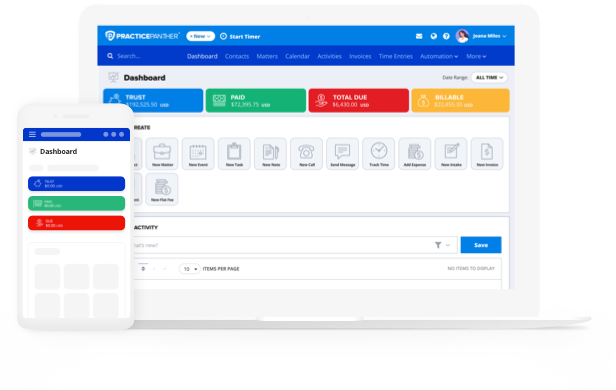Organizational skills are crucial for attorneys, particularly when handling extensive paperwork, sensitive client data, and legal documents. Disorganization can lead to last-minute rushes, difficulty in finding requested information, and a lack of clarity in case strategy and status.
Many legal case management software options and case management tools offer innovative features to assist attorneys in file organization. However, effective organization goes beyond just color-coding or adding labels. This blog will explore advanced methods for organizing legal case files, whether digitally or in physical form, ensuring meticulous organization for every case.
How Do You Organize Documents for a Legal Case?
When it comes to organizing documents for a legal case, categorization is key. While many legal files are typically arranged chronologically, for a specific legal case, a more effective approach is to categorize them.
Here are some recommended categories for organizing documents in a legal case:
- Foundational Documents: These are the documents you’ll refer to frequently throughout the case.
- Discovery Documents: This category includes requests, responses, and related correspondence.
- Documents Relating to a Particular Motion: It includes briefs, cited case law, exhibits, and related correspondence specific to motions in the case.
- Miscellaneous Documents: This category is for other documents that you may not need to access frequently but want to keep on hand.
Whether you prefer to store documents physically or digitally, there are methods to keep your legal case materials organized and easily accessible. For physical documents, color-coded tabs, folders, and paperclips are great ways to quickly identify and access the documents. Alternatively, if you prefer digital storage, folders with appropriate labeling and tags can help maintain a well-organized repository in one location.
How Do You Organize Evidence for Litigation?
Organizing evidence for litigation is a complex task that involves gathering, categorizing, and presenting information in a way that supports your legal case. To organize evidence for litigation, you will need to first identify relevant evidence and documents, such as:
- Documentary Evidence: Gather documents such as contracts, emails, letters, financial records, and any other written or recorded material relevant to the case.
- Digital Evidence: In cases involving digital evidence, make sure to properly store and document data. This includes metadata, timestamps, and ensuring that data integrity is maintained.
- Physical Evidence: Collect any physical items or objects that are relevant, such as photographs, products, or equipment.
- Witness Statements: Record these statements accurately and consider their relevance.
In addition to categorizing evidence by themes in file folders, two effective methods for facilitating quick and easy access are to create a comprehensive index or table of contents and to assign unique identifiers or labels to each piece of evidence. These practices can help attorneys streamline evidence retrieval but also simplify referencing and citation.
How Do You Store Legal Files?
There is no golden standard for storing legal files; however, there’s one rule that is paramount—storing legal files securely is crucial to ensure that documents are organized, protected, and easily accessible. Here are two ways, plus some best practices, for storing legal files securely:
Physical File Organization
Organizing files physically is one of the most common and traditional ways to store legal files.
- File Cabinets: Organize files in a logical order, such as by case number or client name, and use labels to clearly identify the contents of each file.
- Legal Case File Folders: Use folders, binders, or envelopes to store individual documents within the file cabinets. The best file folders for lawyers are the ones that have comprehensive labeling, including document names, dates, and case numbers, all consistently formatted across all legal file folders.
- Security Measures: Ensure that your office has appropriate security measures in place, including file cabinet locks, alarms, and security cameras to protect confidential client information.
- Document Elimination: Establish a document destruction schedule and policy to regularly dispose of files that are no longer needed.
Digital File Organization
Digital file storage has gained significant popularity among attorneys in recent years. This method provides them with the flexibility to access crucial documents through computers and embrace a paperless approach.
- Digital Case File Folders: Similar to physical storage, creating distinct folders for individual legal cases in a digital database can enhance the efficiency of information retrieval.
- Metadata and Tagging: Properly label and tag digital files to make them easy to find. Include relevant information like case names, dates, and document types.
- Cloud Storage: Cloud storage is a great way to access important case files while being on the go. You can easily retrieve information from any device with an internet connection.
- Access Control: Implement access controls to restrict who can view and edit digital files. Assign permissions based on roles and responsibilities within your team.
- Encryption: Use encryption to protect the confidentiality of digital files both in storage and during transmission.
How To Organize Legal Files Online
Many attorneys now turn to legal case management software, such as PracticePanther, for efficient organization. For instance, attorneys can take advantage of PracticePanther features to maintain a well-organized approach to case management, including custom tags for categorizing cases and clients, as well as workflow automation capabilities for repetitive tasks.
Steps To Open a New Legal File (With Checklist)
Opening a new legal file involves several steps, often managed by paralegals, while attorneys concentrate on gathering evidence and conducting research for their clients. To maintain consistency and ensure that all file-opening requirements are met, many attorneys create paralegal file-opening checklists. These checklists may include key questions such as:
- Has a conflict check been completed with a negative result?
- Has the client filled out an intake form?
- Have we collected all necessary client identification information?
- Have we identified the source of funds for the case?
- Has the client’s file been successfully created in the legal case management software system?
- Is the client’s email recorded, and have we confirmed their preferred method of communication?
- Have we established all upcoming deadlines for court dates, document submissions, payment dates, etc.?
These questions provide a solid foundation for attorneys to establish a paralegal file-opening checklist. It’s important to note that the checklist’s specific items may vary depending on case types, duration, and individual client needs.
How Do Lawyers Name Files?
Lawyers can stay organized by naming their legal files in a consistent format, such as “client name, case name, case number, month, and year.” Furthermore, many use tags or color-coding to classify legal files by case type for enhanced organization.
Create a Successful Law Firm with Organized Legal Case Files
Maintaining a high level of organization is undeniably a critical attribute for attorneys. However, the nature of the legal profession often demands that attorneys spread their attention across various tasks. Fortunately, with the help of appropriate resources and effective legal case management software, attorneys can establish and operate a successful law firm with organized legal case files that are easily retrievable.
If you’re interested in discovering how PracticePanther can enhance your legal case file organization, we invite you to schedule a time with our team to experience it firsthand. Alternatively, you can begin your 7-day free trial to gain a better understanding of how our legal case management software can benefit your practice.





